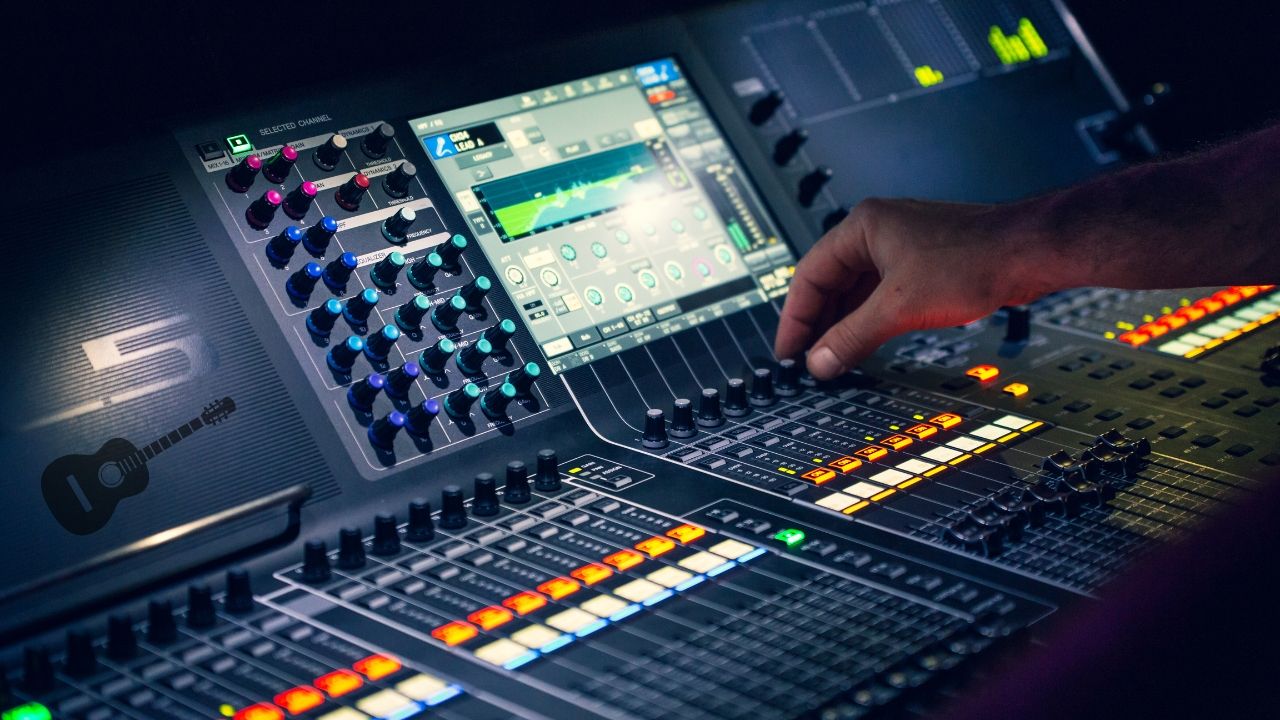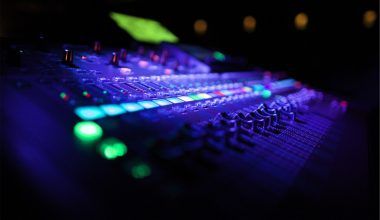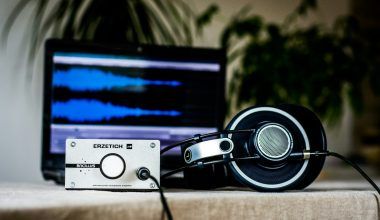Creating a music mashup is a fantastic way to combine elements from different songs to create something entirely new. Whether you’re a DJ, producer, or a music enthusiast, learning how to create a music mashup can be a fun and rewarding experience. In this guide, we’ll take you through the process of creating a music mashup, from choosing the right tracks to polishing the final product. Let’s dive in!
What is a Music Mashup?
A music mashup is a creative blend of two or more songs, where the elements of each song are combined to form a new piece. Typically, this involves overlapping vocals from one track with the instrumental from another. The end result is a seamless mix that sounds like a completely new song. Understanding how to create a music mashup is essential if you want to experiment with different sounds and create something unique that resonates with your audience.
Step 1: Choose the Right Songs
The foundation of any good music mashup lies in the song selection. Here’s how to pick the right tracks to understand better how to create a music mashup:
- Match the BPM (Beats Per Minute): Ensure the songs you choose have a similar BPM. This makes it easier to blend the tracks without distorting their rhythm.
- Find Complementary Keys: Songs that are in the same key or harmonically compatible will sound better together. Tools like Mixed In Key can help you identify the keys of your tracks.
- Pick Songs with Clear, Distinct Parts: Vocals, basslines, and drum patterns should be easy to isolate. This makes it easier to combine elements from different tracks in your music mashup and learn effectively how to create a music mashup.
To make a truly exceptional mashup, consider choosing songs from different genres. This not only adds an element of surprise but also showcases your creativity. Mixing a pop song with an electronic beat or a hip-hop track with a classical melody can result in something fresh and exciting. However, it’s important to maintain a balance between creativity and coherence. Ensure that the songs you choose still have some common ground, whether it’s a similar tempo, mood, or lyrical theme. This harmony will make the final mashup sound polished and intentional, a crucial aspect of mastering how to create a music mashup.
Step 2: Gather Your Tools
To create a music mashup, you’ll need the right software and equipment. Learning how to create a music mashup is much easier with the right tools:
- DAW (Digital Audio Workstation): Software like Ableton Live, FL Studio, or Audacity will allow you to edit and mix your tracks.
- Audio Interface: If you’re planning to record live elements or use physical instruments, an audio interface is essential.
- Headphones/Speakers: High-quality headphones or studio monitors are crucial for hearing the finer details of your music mashup.
- MIDI Controller (Optional): This can make the process of arranging and manipulating sounds easier.
If you’re just starting out and don’t want to invest heavily in equipment, free or low-cost DAWs like Audacity can still offer you a great platform to practice how to create a music mashup. As you become more proficient, you may choose to upgrade to more advanced software that offers a broader range of features. Additionally, having a pair of good quality headphones is non-negotiable. They allow you to catch minute details in your mix that might be missed with standard speakers. Understanding the nuances of sound through the right tools is a critical part of mastering how to create a music mashup.
Step 3: Prepare Your Tracks
Before you start mixing, prepare your tracks carefully as you learn how to create a music mashup:
- Isolate the Vocals and Instrumentals: Use a DAW or specialized software to extract the vocals and instrumentals. Some tracks may have acapella versions available, making this step easier.
- Align the BPM: If the BPM of your tracks doesn’t match, use your DAW to adjust the tempo without altering the pitch. This will help your music mashup sound smooth and cohesive, a critical step in how to create a music mashup.
- Cut and Loop Sections: Identify the parts of each track you want to use, then cut and loop them as needed. For example, you might loop a drum beat from one track and layer it under the vocals from another. Mastering these skills will help you effectively understand how to create a music mashup.
When preparing your tracks, also consider the overall structure of your mashup. Decide whether you want it to follow a traditional song format (verse, chorus, verse) or if you want to experiment with a more freeform structure. Sometimes, repeating a catchy chorus multiple times can create a powerful hook in your music mashup. Additionally, pay attention to the energy levels of each section. You might want to start with a calm introduction and build up to a high-energy chorus. Balancing these elements will help you craft a compelling and dynamic mashup, a key aspect of mastering how to create a music mashup.
Step 4: Start Mixing
Now it’s time to actually create your music mashup. The most exciting part of learning how to create a music mashup involves mixing:
- Lay Down the Instrumental Track: Start by laying down the instrumental track that will form the backbone of your mashup. Adjust the tempo if necessary to match the vocals.
- Add Vocals: Slowly introduce the vocal track, aligning it with the instrumental. Use crossfades and volume adjustments to ensure a smooth blend, an essential technique in how to create a music mashup.
- Mix and Match Elements: Experiment with adding different elements from each track. For example, you might use the bassline from one song and the drums from another. The key is to create a seamless mix where all parts complement each other, a skill you develop as you learn how to create a music mashup.
While mixing, remember that balance is key. Ensure that no single element overwhelms the others. For instance, the vocals should be clear and not drowned out by the instrumental parts. If you find that the vocals or any other element are getting lost, use EQ to carve out space for them in the mix. Another useful trick is to add effects like reverb or delay to give certain elements more depth. These effects can help glue the different parts together, making your mashup sound cohesive. Understanding the intricacies of mixing is a crucial part of learning how to create a music mashup.
Step 5: Polish Your Mashup
Polishing is crucial for making your music mashup sound professional. To master how to create a music mashup, you must focus on the details:
- EQ and Compression: Use EQ to balance the frequencies and ensure nothing sounds too harsh or muddy. Compression can help even out the dynamics.
- Add Effects: Reverb, delay, and other effects can add depth to your mashup. Be careful not to overdo it—subtlety is key when learning how to create a music mashup.
- Automation: Use automation to adjust levels, pan, and effects throughout the track. This adds interest and ensures a dynamic listening experience.
- Master Your Track: Finally, master your mashup to ensure it sounds good on all playback systems. Mastering involves final EQ adjustments, compression, and limiting, a final step in understanding how to create a music mashup.
Don’t rush the polishing stage. Take the time to listen to your mashup on different devices—headphones, car speakers, and home sound systems. This will help you identify any issues that might not be obvious when listening on a single device. You might discover that certain frequencies are too dominant on specific speakers, and you can adjust the EQ accordingly. Additionally, make sure the transitions between different parts of your mashup are smooth. Any abrupt changes can disrupt the flow of the track. These final tweaks are what separate a good mashup from a great one, an essential lesson in how to create a music mashup.
Once your music mashup is complete, it’s time to share it with the world. Sharing your work is an exciting part of how to create a music mashup:
- Export the Track: Export your mashup as a high-quality audio file. Most DAWs offer multiple formats—WAV and MP3 are the most common.
- Upload to Platforms: Share your music mashup on platforms like SoundCloud, YouTube, or Mixcloud. Make sure to include relevant tags and a catchy title to attract listeners.
- Promote Your Mashup: Use social media to promote your mashup. Engage with listeners and other creators to build a following, a crucial aspect of mastering how to create a music mashup.
To maximize your reach, consider creating a simple but engaging video to accompany your mashup. Even if it’s just a visualizer or a slideshow of images, having something visual can help attract more attention on platforms like YouTube. Additionally, interacting with your audience is key. Respond to comments, ask for feedback, and engage in discussions about your mashup. This not only helps build a loyal fan base but also provides valuable insights that can improve your future mashups. Engaging with your audience is an integral part of mastering how to create a music mashup, as it allows you to understand what resonates with listeners and what doesn’t.
Step 7: Protect Your Work
When you create something as unique as a music mashup, it’s essential to protect your work. Here’s how you can safeguard your mashup and ensure you get the credit you deserve:
- Copyright Considerations: Understand that mashups often use copyrighted material. Before sharing your mashup publicly, research the copyright laws in your country. Some platforms like YouTube or SoundCloud may flag or remove content that uses copyrighted material without permission.
- Licensing: Consider obtaining the necessary licenses to legally use the songs in your mashup. This might involve contacting the original artists or their record labels. While this can be a complex process, it ensures that your mashup is legally protected.
- Creative Commons: If you’re looking to avoid copyright issues, consider using tracks that are under Creative Commons licenses. These tracks are often free to use, provided you give proper credit to the original creators. Understanding these legal aspects is crucial when learning how to create a music mashup.
- Register Your Work: If you’re proud of your mashup and want to ensure your rights are protected, consider registering it with a performing rights organization (PRO). This can help you collect royalties if your mashup gains traction and is played in public venues or online.
By taking these steps, you not only protect your creation but also ensure that you are respecting the work of other artists. This is an important part of being a responsible creator and mastering how to create a music mashup.
Step 8: Learn from Feedback
Creating a music mashup is a learning process, and one of the best ways to improve is by learning from feedback. Here’s how to approach this:
- Listen to Criticism: When you share your mashup, be open to constructive criticism. Not all feedback will be positive, but even negative feedback can provide valuable insights that help you grow as a creator.
- Analyze Your Work: After receiving feedback, take a step back and listen to your mashup with fresh ears. Can you hear the issues pointed out by others? How can you improve these areas in your next project?
- Iterate and Improve: Use the feedback to refine your technique. Whether it’s better aligning the vocals with the beat or improving the mix, each piece of feedback is an opportunity to learn and improve your understanding of how to create a music mashup.
- Engage with Your Community: Join forums, social media groups, or online communities dedicated to mashups and music production. Here, you can share your work, receive feedback, and learn from other creators who have mastered how to create a music mashup.
Remember, every mashup you create is a step towards mastering your craft. Don’t be discouraged by setbacks or criticism. Instead, view them as opportunities to learn and grow. This mindset is crucial for anyone serious about mastering how to create a music mashup.
Step 9: Stay Updated with Trends
The music industry is constantly evolving, and staying updated with the latest trends can help keep your music mashup fresh and relevant. Here’s how to keep your finger on the pulse:
- Listen to Current Hits: Regularly listen to the top tracks in various genres. This helps you understand what sounds are popular and how you can incorporate them into your mashups. Understanding current trends is a key part of staying relevant in how to create a music mashup.
- Experiment with New Software: Technology in music production is always advancing. New plugins, DAWs, and tools can offer fresh ways to create and innovate. Experimenting with new software can help you find unique sounds and techniques that set your mashups apart.
- Attend Workshops and Tutorials: Whether online or in-person, workshops and tutorials can offer valuable insights into new techniques and trends in music production. These learning opportunities can significantly enhance your skills in how to create a music mashup.
- Network with Other Creators: Engaging with other musicians and producers can expose you to new ideas and techniques. Networking is not only about making connections but also about sharing knowledge and learning from others in the industry.
By staying updated with trends and continuously learning, you can keep your mashups fresh, innovative, and appealing to listeners. This proactive approach is essential for anyone looking to master how to create a music mashup.
Step 10: Practice, Practice, Practice
As with any skill, practice is key to mastering how to create a music mashup. Here’s why regular practice is so important:
- Improves Technical Skills: The more you work on mashups, the better you’ll get at using your DAW, aligning beats, and mixing tracks. Technical proficiency is the foundation of a great music mashup.
- Enhances Creativity: Regular practice encourages you to experiment with different sounds, genres, and techniques. Over time, you’ll develop a unique style that sets your mashups apart from others.
- Builds Confidence: The more you practice, the more confident you’ll become in your abilities. This confidence will allow you to take more creative risks, leading to even more innovative mashups.
- Provides a Portfolio: Regularly creating and sharing mashups builds a portfolio of work that you can showcase to potential collaborators, clients, or fans. This portfolio is a testament to your skills and creativity in how to create a music mashup.
Don’t be afraid to make mistakes during practice. Each mistake is a learning opportunity that brings you closer to mastering the art of how to create a music mashup. The key is to keep going, keep experimenting, and keep refining your craft.
Conclusion
Creating a music mashup is a rewarding process that allows you to express your creativity in a unique way. By following the steps outlined in this guide, you’ll be well on your way to producing mashups that not only sound great but also resonate with listeners. Remember, practice makes perfect, so keep experimenting and refining your technique, and you’ll soon be an expert in how to create a music mashup.
The journey of learning how to create a music mashup is continuous. As you grow and evolve as a creator, your mashups will also improve and become more complex. Stay curious, keep learning, and most importantly, have fun with the process. Music is an art, and your mashups are your personal expression of that art. Embrace the journey, and enjoy every step of mastering how to create a music mashup.
For further reading, explore these related articles:
- Top Music Distribution Companies in India
- How Does Music Distribution Work?
- Create a Music Band Website
For additional resources on music marketing and distribution, visit Deliver My Tune.






